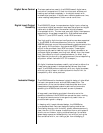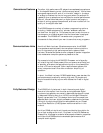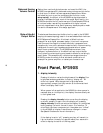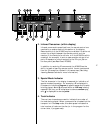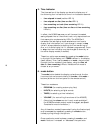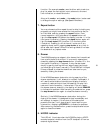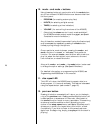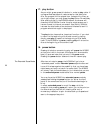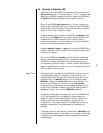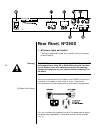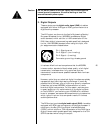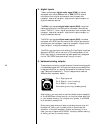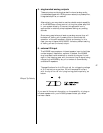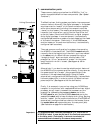
21
13. track repeat LED
This LED is lit when the Nº390S is set to repeat a single track
endlessly. This feature is accessed using the repeat button (see
number 7, page 19).
14. next/f.fwd button
Pressing this button momentarily will advance the Nº390S to
the beginning of the next track. Pressing and holding this
button will instead perform a fast forward scan of the music,
reminiscent of the fast forward function found on many tape
decks. This scanning mode may be either audible or silent
(according to your choice in the setup: sound menu; see
Special Functions), and it allows you to quickly find a particular
point within a track.
15. stop/drawer
Pressing this button once while a disc is playing will stop the
disc, resulting in the total number of tracks and the total time
on the disc being displayed. (Both the time on disc and the
time remaining LEDs are lit to clarify the meaning of the
information being displayed at this point.) Pressing this button
once the disc has stopped, or if there is no disc in the transport,
will cause the drawer to open.
Pressing the stop/drawer button will cause an open drawer to
close. If it senses a disc in the drawer, the Nº390S will confirm
its internal conversion rate on the display (24-bit, 352kHz)
and then read the disc’s table of contents so that it may
display the total number of tracks and the total time on the
disc for your information. If a custom play list exists for the
disc, the total number of tracks and the total time of the play
list is displayed instead.
16. time on disc and time remaining LED indicators
These LEDs are used to indicate which of the four available
display modes the Nº390S is in. The four indications of time
that can be displayed are:
• time elapsed in track (neither LED lit)
• time elapsed on disc (time on disc LED lit)
• time remaining on track (time remaining LED lit)
• time remaining on disc (time on disc and time remaining
LEDs lit)
These four options are accessed by selecting the TIMES mode
(using the mode button) and repeatedly pressing the mode +
or mode – buttons, which cycle forward or backward through
the four modes, respectively.



